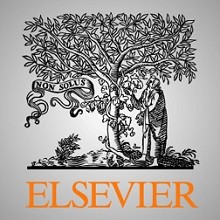
یک مطالعه مبتنی بر شبیه سازی چند مرکزی در مورد آنافیلاکسی
Abstract
Introduction
Methods
Results
Discussion
Conclusions
References
Abstract
Background: Multi-institutional, international practice variation of pediatric anaphylaxis management by healthcare providers has not been reported. Objective: Characterize variability in epinephrine administration for pediatric anaphylaxis across institutions, including frequency and types of medication errors. Methods: A prospective, observational, study using a standardized in situ simulated anaphylaxis scenario was performed across 28 healthcare institutions in six countries. The on-duty healthcare team was called for a child (patient simulator) in anaphylaxis. Real medications and supplies were obtained from their actual locations. Demographic data about team members, institutional protocols for anaphylaxis, timing of epinephrine delivery, medication errors, and systems safety issues discovered during the simulation were collected. Results: Thirty-seven in situ simulations were performed. Anaphylaxis guidelines existed in 41% (15/37) of institutions. Teams used a cognitive aid for medication dosing 41% (15/37) of the time and 32% (12/37) for preparation. Epinephrine auto injectors (EAIs) were not available in 54% (20/37) of institutions and were used in only 14% (5/37) simulations. Median time to epinephrine administration was 95 seconds (IQR 77, 252) for EAI and 263 seconds (IQR 146, 407.5) for manually prepared epinephrine (p=.12). At least one medication error occurred in 68% (25/37) of simulations. Prior nursing experience with epinephrine administration for anaphylaxis was associated with fewer preparation (p=.04) and administration (p=.01) errors. Latent safety threats (LSTs) were reported by 30% (11/37) of institutions, more than half of these (6/11) involved a cognitive aid. Conclusion and Relevance: A multicenter, international study of simulated pediatric anaphylaxis reveals: 1) variation in management between institutions in usage of protocols, cognitive aids, and medication formularies, 2) frequent errors involving epinephrine, 3) LSTs related to cognitive aids among multiple sites.
Introduction
Anaphylaxis is a severe, life threatening, systemic allergic reaction that is rapidly progressive and potentially fatal.(1) In the United States, estimated lifetime prevalence is at least 1.6% with an increasing incidence globally and in children. (2) Rapid deterioration and death can occur within minutes from the onset of symptoms, and prompt reversal can occur after administration of intramuscular (IM) epinephrine.(3-4) Delays in epinephrine treatment increase the risk of adverse outcomes including mortality.(5,6) The recommended dose and route for treating pediatric anaphylaxis is 0.01 mg/kg administered IM in the vastus lateralis muscle.(1) IM epinephrine is given via an epinephrine injection (EI) or an epinephrine auto injector (EAI). EI requires that the epinephrine dose be calculated and drawn up from a vial into a syringe whereas EAIs deliver a single dose of epinephrine via a disposable, pre-filled, automatic injection device.
